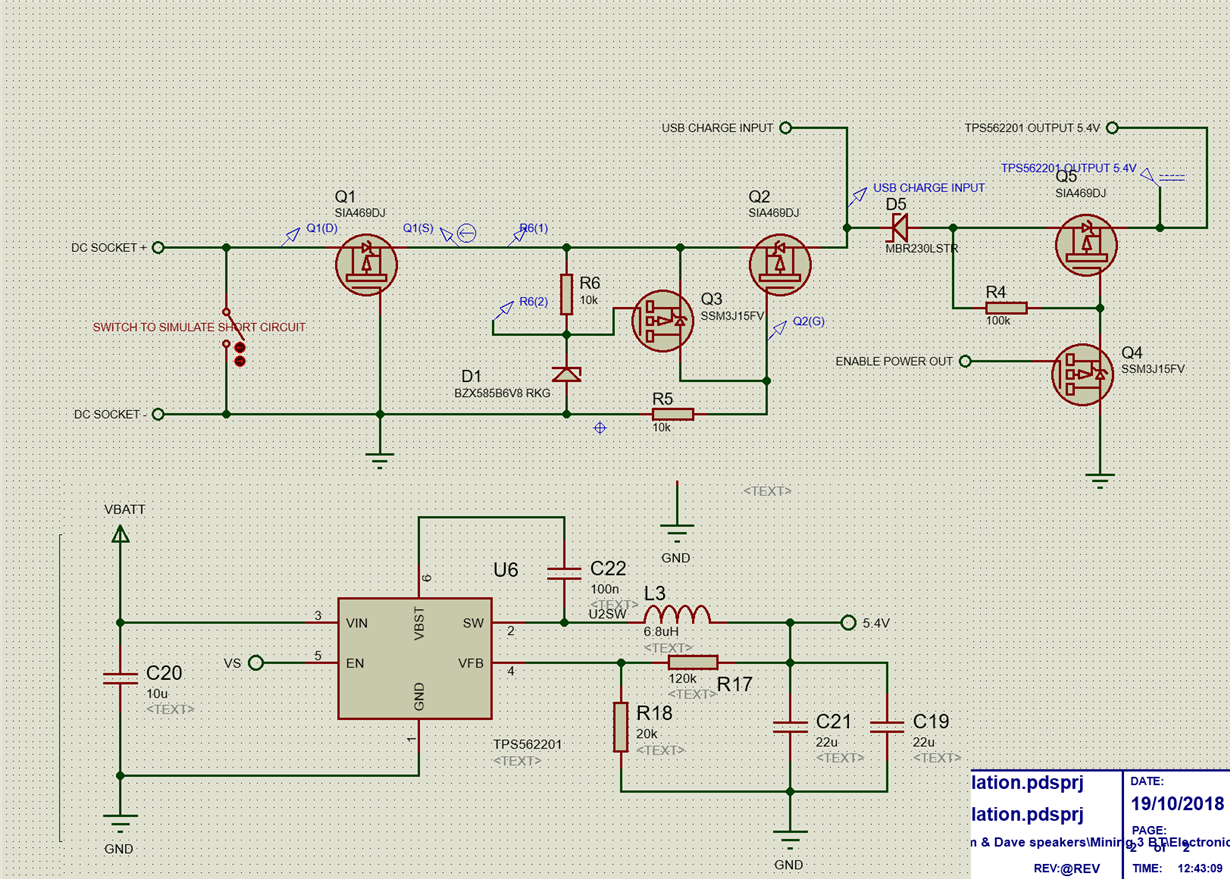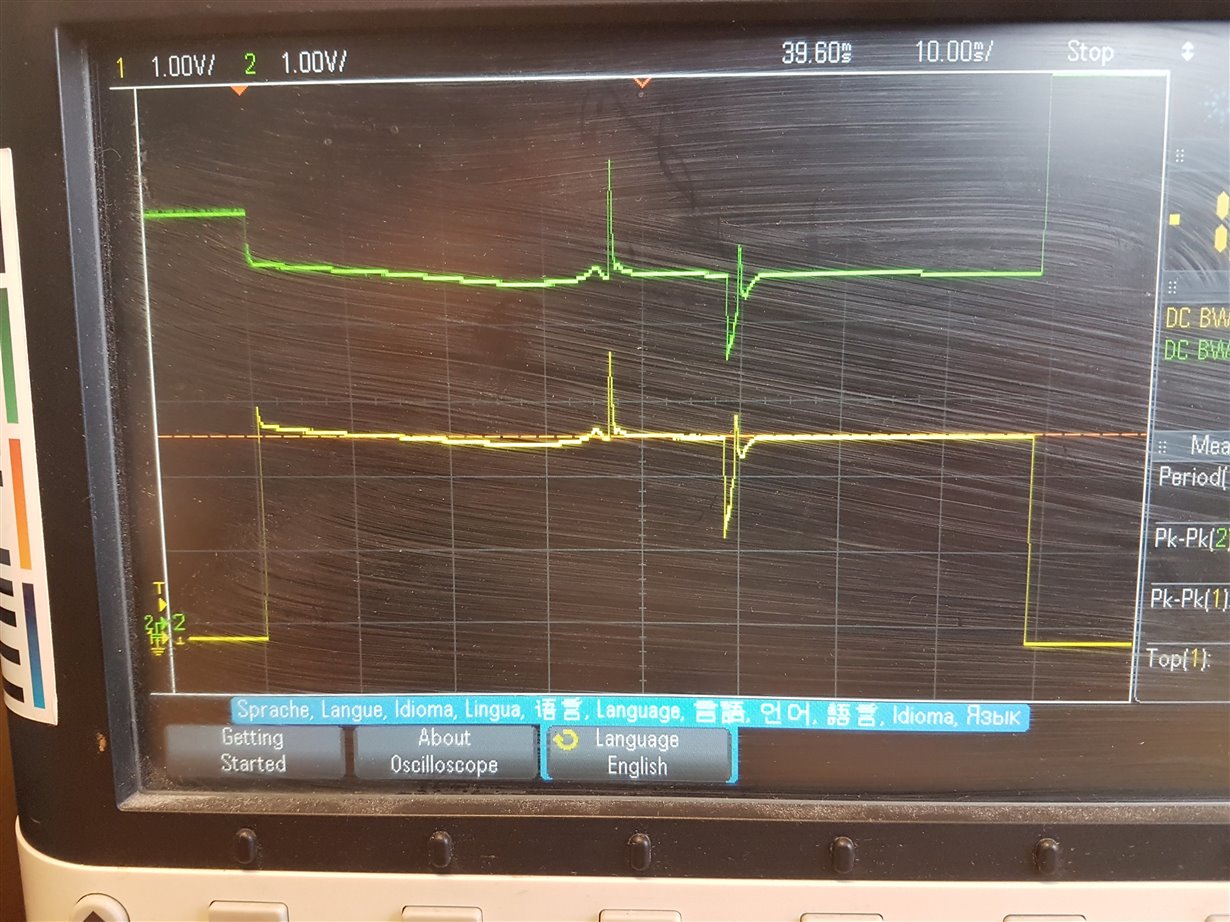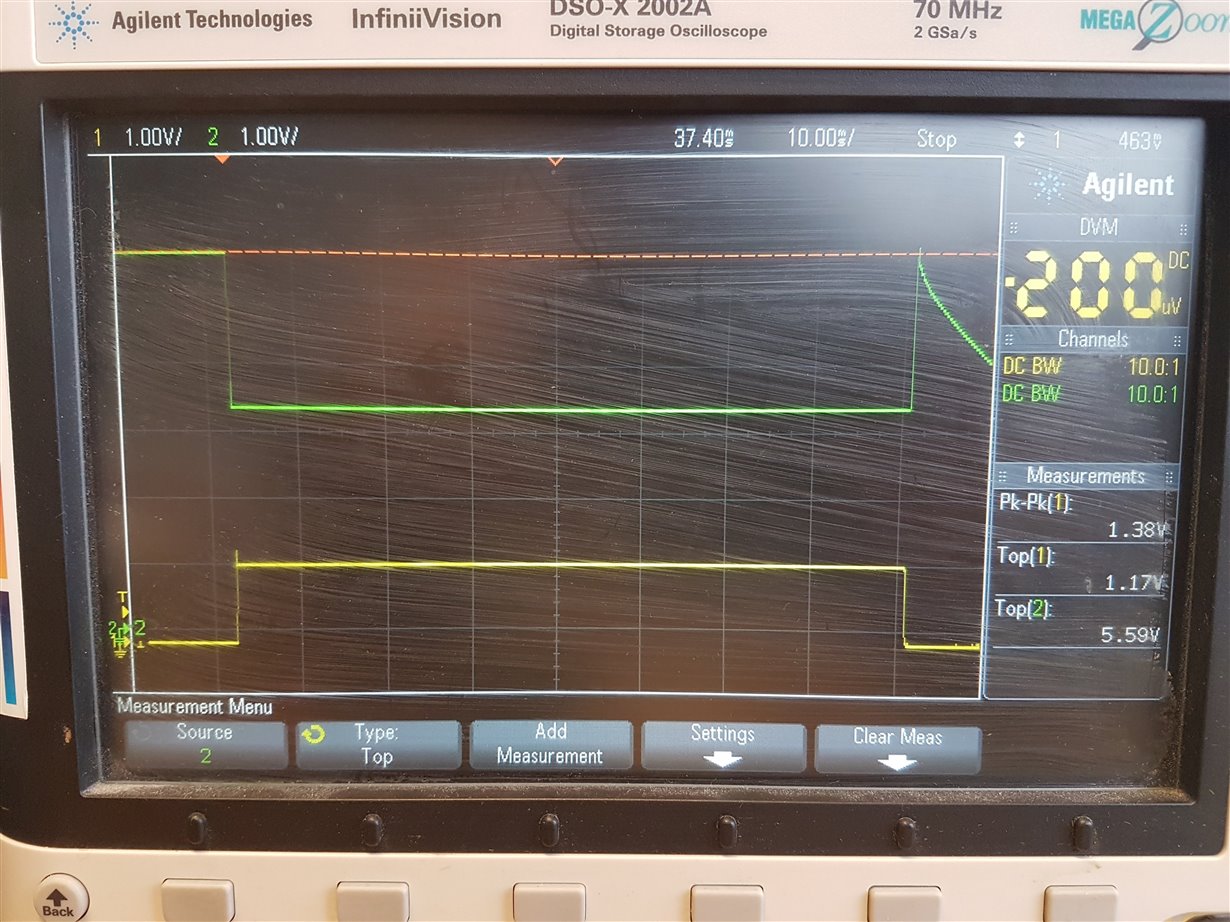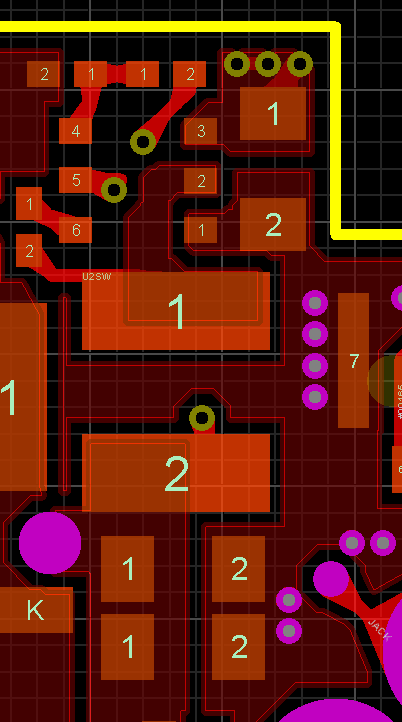Other Parts Discussed in Thread: TPS562208, TPS54202
When the output of the TPS562201 is shorted the IC is not protecting itself and instead, it blows up.
The TPS562201 is being used to generate a 5.4V rail which is used as a "USB power out". Although there is current protection on this output, it will often take 10-50mS to activate, in which time the IC blows up.
My questions are:
1) Should this IC be able to handle the output going short circuit without destroying itself?
2) Can you suggest a pad/pin compatible IC can?





